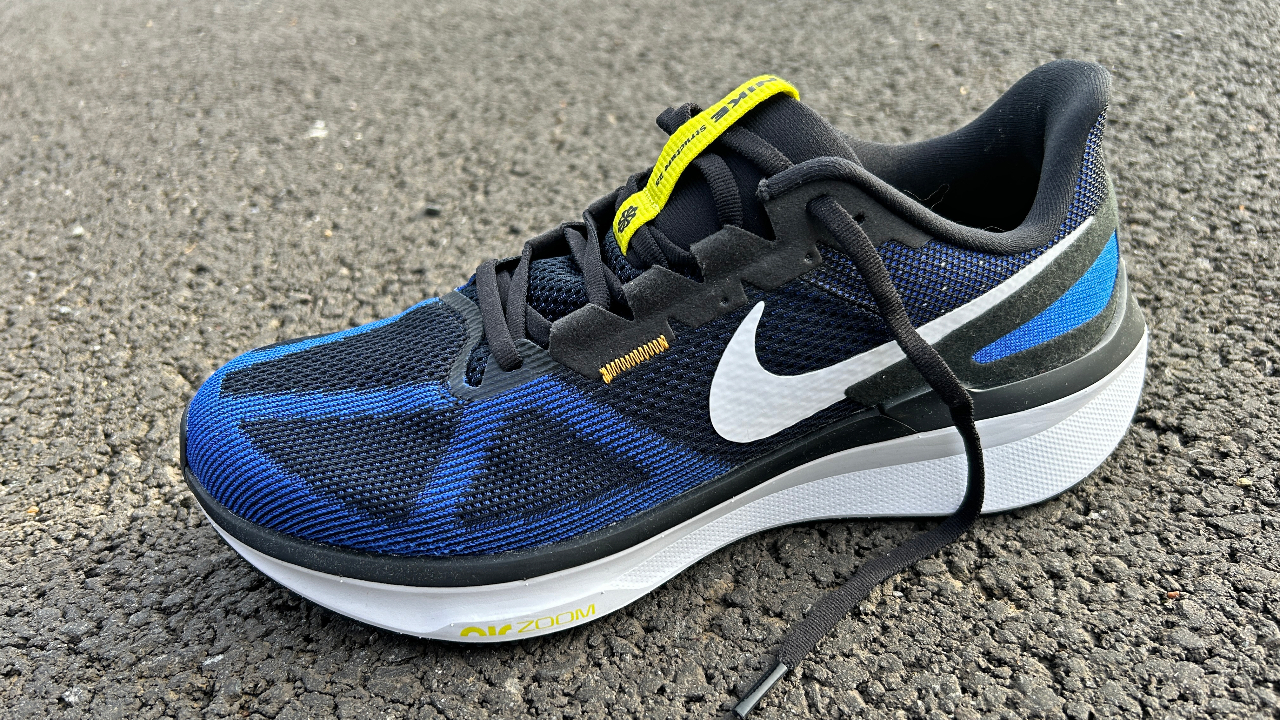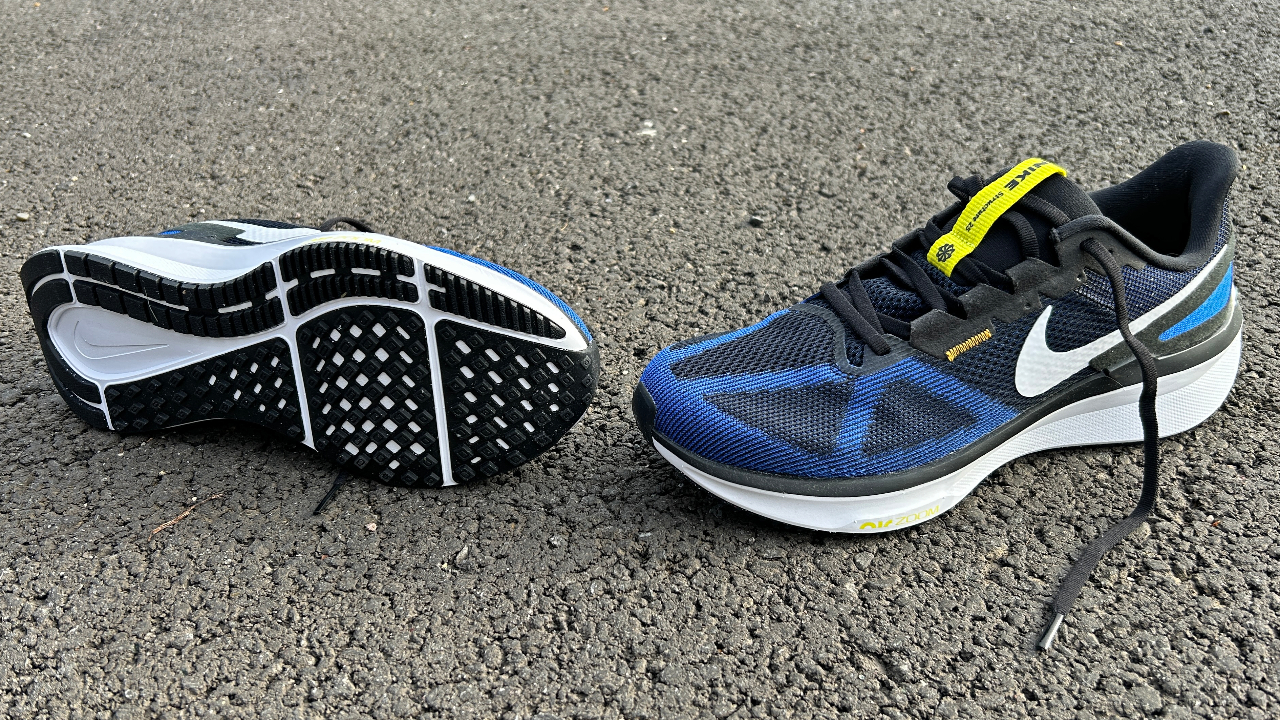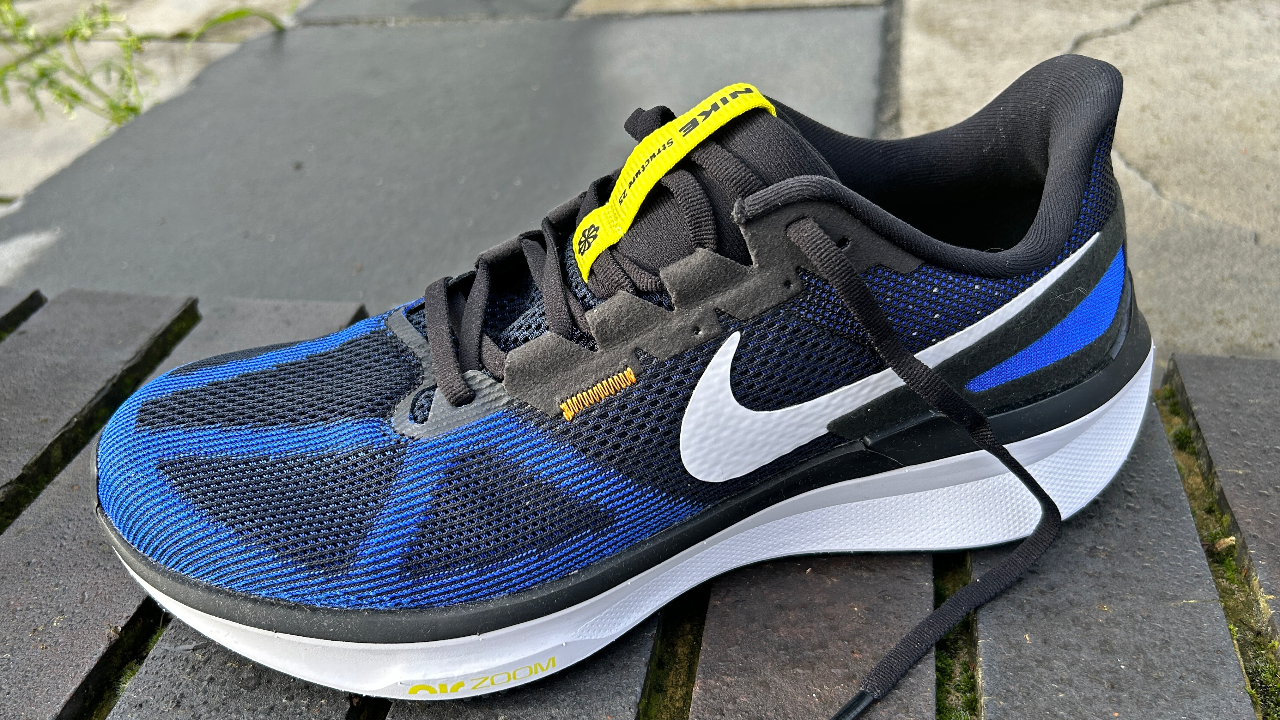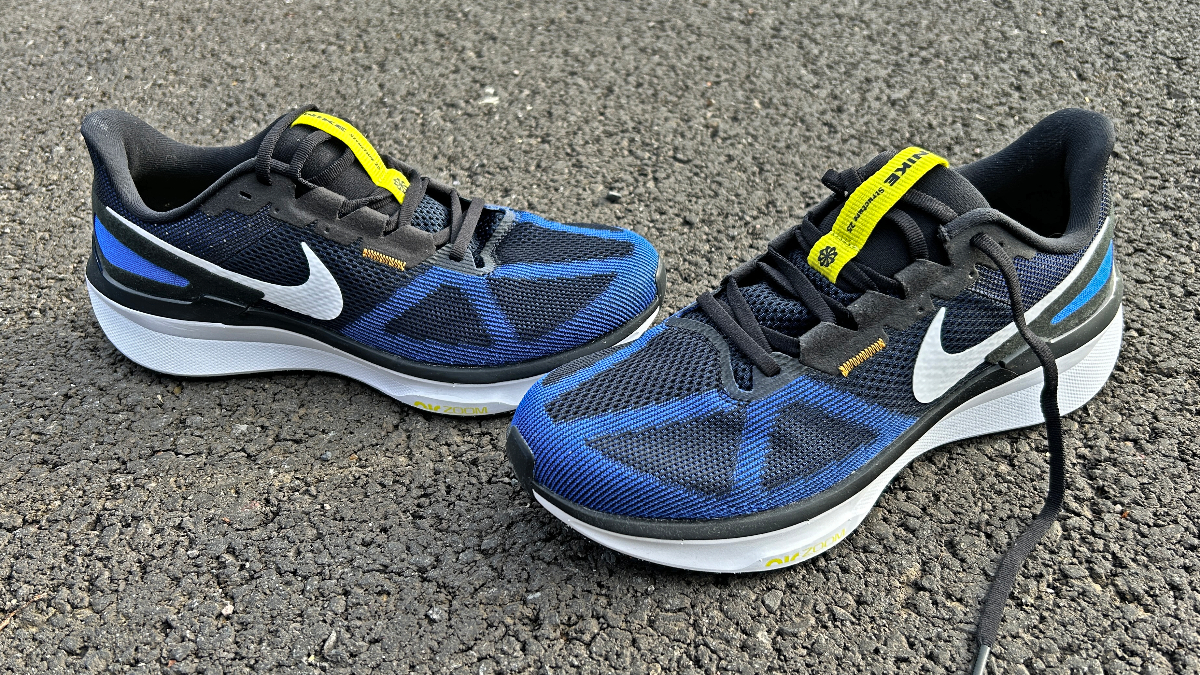Our Verdict
The Nike Structure 25 is a stability shoe built to handle daily training. It’s not the most exciting shoe, and it’s too heavy and lacking in bounce to be much use for fast running. But it’s a durable and reliable option for those seeking a stable shoe for easy runs.
For
- Stable and cushioned
- Durable outsole
- Reasonable value
Against
- Dull ride
- Not versatile
You can trust Coach
The Nike Structure 25 is a daily training shoe that provides extra stability for runners who overpronate. It has similar elements to the Nike Pegasus 40, but is heavier and less versatile, and really only performs well in one role, which is to be a stable shoe for easy runs.
I didn’t love my time with the Nike Structure 25, though I didn’t hate it either. It does its job well enough, and it should be a durable shoe thanks to the thick outsole and firm midsole. It’s one of the best Nike running shoes, in terms of providing a stable option that’s also reasonable value, even if other stability shoes offer greater versatility and more enjoyable rides.
Nike Structure 25: Price And Availability
The Nike Structure 25 launched in fall 2023 and costs $140 in the US and £119.95 in the UK. It’s the same price as the Nike Pegasus 40, which is Nike’s most popular neutral daily trainer, and significantly cheaper than the Nike InfinityRN 4, Vomero 17 and Invincible 3 cushioned shoes.
How I Tested This Shoe

I’ve run just over 30 miles in the Nike Structure 25, using it for easy runs, a progression run moving from easy to tempo pace, and a 13-mile long run. I’ve also tested most of Nike’s current range, and many of the best stability shoes on the market.
Design And Fit
The Nike Structure 25 is more cushioned than previous models within the line, with the stack height at 37.7mm at the heel and 27.7mm at the forefoot for a 10mm drop. Despite such a high stack of foam, it’s not a soft shoe. The Cushlon 3.0 foam used for the majority of the midsole being quite firm.
There is also an Air Zoom unit under the forefoot to add extra responsiveness, though the Structure is not built to be a lively shoe. Instead, the midsole is designed to dull the impact of running while providing stability through extra support around the arch and a large heel clip, as well as sidewalls of foam.
The mesh upper is relatively thick and there is a lot of padding on the tongue and collar. I found the amount of padding and shape of the collar on the shoe irritated my right achilles, so I cut it back to make it more comfortable. Otherwise, the fit was good in my normal running shoe size, with a good amount of room in the toe box and a snug, supportive fit around the midfoot.
Sign up for workout ideas, training advice, reviews of the latest gear and more.

At 11.2oz/317g in a UK size 9, the Structure 25 isn’t light, though it’s about par for the course for a highly cushioned shoe built for easy runs. Part of the weight is down to the thick outsole, with rubber covering most of the bottom of the shoe.
This outsole has a similar design to the Nike Pegasus 40, with small lugs that improve the grip on light trails, and it also provided good traction on wet paved surfaces during my testing.
Running Performance
I didn’t enjoy my first run in the Nike Structure 25, which was an hour-long progression run moving from easy pace to around tempo effort by the end. The start of the run was fine, but trying to run at any kind of speed felt bad. It’s a firm ride with no real bounce from the midsole, and it’s a heavy shoe, so it doesn’t give much back when aiming for speed.
From then on I’ve stuck to easy paces in the Structure 25 and it has felt better. The stability elements of the shoe are subtle enough to not be overbearing and the ride is reasonably comfortable, if firmer than most cushioned shoes these days.

On my long run in the shoe I did an easy half marathon and got into a nice rhythm with the Structure 25. It’s not a particularly rockered shoe, but stick to easy paces and the ride can be quite smooth. I’d prefer a softer ride to go beyond 15 miles in the shoe because the firm midsole foam and thick, hard outsole rubber make the Structure 25 less comfortable than other highly cushioned shoes like the Nike Vomero 17 or Asics Gel-Nimbus 25.
The outsole was impressive on slick paved surfaces covered in leaves, and gripped well on light trails such as park paths and canal towpaths. It should also be durable given the thick layer of hard rubber, and with a firm midsole that’s unlikely to break down rapidly, the Structure 25 should be a long-lasting shoe.
Is The Nike Structure 25 Worth It?

The Nike Structure 25 is a simple shoe that does one job reasonably well. It’s a stable option for easy training runs, and while the ride isn’t versatile or exciting, the Structure will be durable and supportive. It’s not too expensive either.
It’s also a shoe that’s likely to appear in Nike’s sales and if it drops under $100/£100 it’ll be one of the best-value stability shoes you can find.
There are more impressive stability shoes, though. The Asics Gel-Kayano 30 is more comfortable for long runs, and despite being absolutely huge it weighs about the same as the Structure 25—and is a touch more versatile thanks to livelier midsole foam.
The Saucony Tempus is an excellent all-rounder with stability features, and I also prefer the Puma ForeverRun as a stable daily trainer. The Nike Pegasus 40 is quite stable itself for a neutral shoe, and has a more versatile and enjoyable ride than the Structure 25.

Nick Harris-Fry is a journalist who has been covering health and fitness since 2015. Nick is an avid runner, covering 70-110km a week, which gives him ample opportunity to test a wide range of running shoes and running gear. He is also the chief tester for fitness trackers and running watches, treadmills and exercise bikes, and workout headphones.

